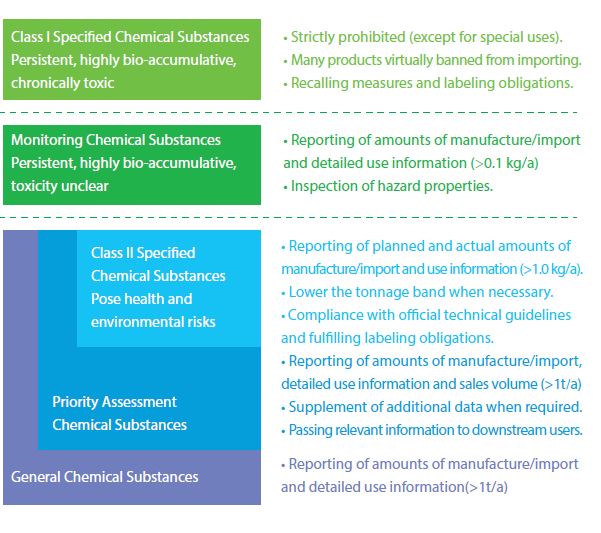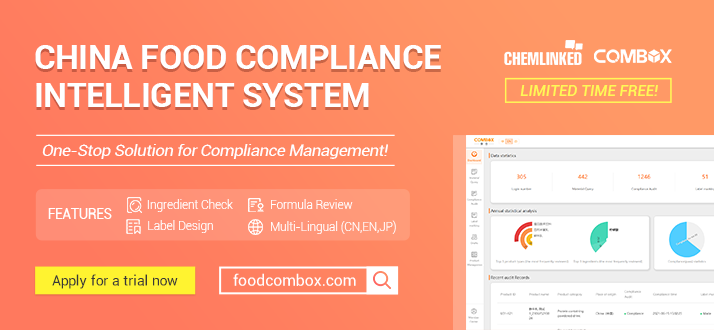Japan Chemical Substances Control Law
Overview
Enacted on 16 October 1973, the Japan Chemical Substances Control Law (CSCL) was the world’s first to regulate chemicals and control risks. In 2017, the 4th amendment to the Japan Chemical Substances Control Law was passed and will be implemented in phases from April 1, 2018 and January 1, 2019. The Law is intended to manage risks of industrial chemicals both manufactured in Japan and imported, giving the Ministry of Health, Labor and Welfare (MHLW), Ministry of Environment (MOE) and Ministry of Economy, Trade and Industry (METI) oversight authority over these issues.
Parties Covered by CSCL
- Japanese manufacturers and importers of chemical substances.
- Foreign companies selling chemical substances to Japan.
Categorizing Chemical Substances under CSCL
The categories of existing chemical substances and newly announced chemical substances include most chemical substances manufactured, imported and used in Japan. The status of a substance, existing or new, can be confirmed by searching through these lists. Those included in the inventories and assigned with MITI numbers are existing substances while those not are new substances requiring notification under CSCL.

Existing Chemical Substances Management

Exemptions:
• Solid and liquid waste (excluding those recalled and sold);
• Natural substances and alloys that do not meet the regulatory definition of “chemical substances”;
• Chemical substances used for R&D purposes or as reagents only;
• Articles and products which can be sold over the counter with a volume of less than 20L (such as household detergent);
• Intermediates (produced and totally consumed on site);
• Impurities (<10%, w/w), excluding practices of dilution and artificial mixing practices;
• Chemical substances regulated by other laws (i.e., pharmaceuticals, cosmetics, pesticides, food additives, etc.) except for industrial applications;
• Substances included in the Exemption List.
New Chemical Substances Notification
New substances notified with low hazard risks are regarded as White Substances and will be added into inventory 5 years after its notification. New substances notified with relatively high hazard risks will fall directly into the category of Priority Assessment Chemical Substances or Monitoring Chemical Substances, the result will be announced within 6-12 months.

Exemptions
• Chemical substances used for R&D purposes or as reagents only;
• Natural substances and alloys that do not meet the definition of “chemical substances”;
• Articles and mixtures packaged for final use (such as household detergent);
• Impurities (<1%, w/w), including byproducts, residual materials, indicators, and catalyst etc.
• Intermediates (produced and totally consumed on site);
• Chemical substances regulated by other laws (i.e., pharmaceuticals, cosmetics, pesticides, food additives, etc.) except for industrial applications.
Notification Process
New substances notified with low hazard risks are regarded as White Substances and will be added into inventory 5 years after their notification. New substances notified with relatively high hazard risks will fall directly into the category of Priority Assessment Chemical Substances, Monitoring Chemical Substances or Class I Specified Chemical Substances, the result of which is announced within 6-12 months.
Our Services
>>Inventory Search and New Chemical Substance Checking
>>Dossier Preparation and Submission of New Substance Notification
>>Formulation of Integral Registration Schemes (Data Evaluation/Gap Analysis/Exemption Analysis)
>>Study Monitoring
>>Communication with Competent Authorities and Experts
>>Training and Consultancy
>>Preparation of SDS and Label




